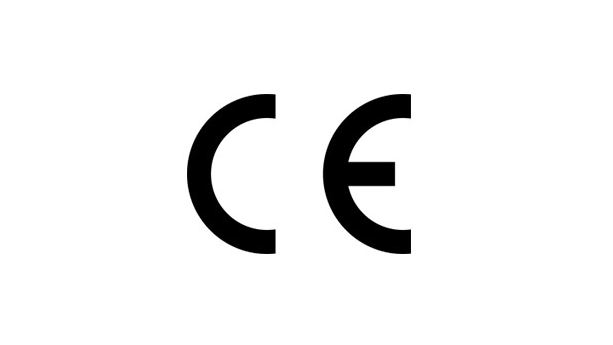
Not sure whether importers and manufacturers require the CE mark for their products in the United Kingdom? In this article, we explore the relevance of the CE mark in the UK post-Brexit, its differences from the UKCA mark, and the CE marking requirements.
Content Overview

FREE CONSULTATION CALL (US, EU & UK)
- Request a free 30-minute call with Ivan Malloci to learn how we can help you with:
- Find product requirements
- Certification and labeling
- Lab testing
What is the purpose of CE marking?
The purpose of the CE mark is to communicate to external stakeholders (like consumers for instance) that the CE-marked product is safe because it meets the essential requirements of the relevant EU directives and regulations.
Affixing the CE mark is but one of the requirements that importers and manufacturers are obligated to adhere to. They should observe the relevant regulations that affect their product category.
Regulatory requirements include:
a. Providing technical documentation
b. Issuing a Declaration of Conformity
c. Adhering to labelling requirements (e.g. traceability information)
d. Acquiring lab testing reports for assessing whether the product meets essential requirements
e. Having the product assessed by a Notified Body (if relevant)
Is CE marking accepted in the UK?

The UK has left the European Union. As a result, from 1 January 2023, importers and manufacturers must affix the UKCA mark on their products or packaging, as the CE mark will no be longer accepted.
However, the UK has retained certain EU regulations, and references are made to their content to ultimately ensure the safety of products entering the UK market.
Post-Brexit, most products with the CE mark may continue to be sold in the UK until 1 January 2023. However, excluding Northern Ireland which still follows EU regulations for product safety, the CE mark is not valid where the relevant EU rule has been updated.
Additionally, before 1 January 2023, the CE mark is not valid if all the following conditions are met:
a. The product is intended for the market in the UK (excluding Northern Ireland)
b. The product falls under the ambit of UK legislation which requires the UKCA marking
c. The product category and related UK regulations require mandatory third-party conformity assessment(s) to be done
d. The UK conformity assessment body performed the conformity assessment
Which products require CE marking in the UK?
Some categories of products might require a recognized mark of compliance in order to be placed in the UK market. Until 1 January 2023, importers and manufacturers who do not need to have their products assessed for conformity by an UK Approved Body, can have only the CE mark affixed to the products.
However, as already said, the CE mark is only valid in the UK (excluding Northern Ireland) where the applicable EU regulations have not changed.
The following are some product categories that may require the CE mark provided that the previously-mentioned conditions are valid:
- Toys
- Electronics
- Lifts
- Machinery
- Measuring instruments
- Non-automatic weighing instruments
- Personal protective equipment
- Pressure equipment
- Pyrotechnics
- Recreational craft
- Simple pressure vessels
Which products should not be CE marked in the UK?
In general, products that are not covered by one or more CE marking directives or regulations, do not require CE marking. This includes products such as:
- Chemicals
- Pharmaceuticals
- Cosmetics
- Foodstuffs
However, even then there may be non-CE marking-related legislative requirements that apply to your product. If no legislative requirements apply to your product, the General Product Safety Regulations (GPSR) may apply. The GPSR compels importers and manufacturers to supply safe products when placed in the UK market.
Can CE marked products still be sold in the UK after 1 January 2023?
Products sold in Northern Ireland would continue to be CE marked as per EU regulations by virtue of the Northern Ireland Protocol. However, for the rest of the United Kingdom, the CE mark will not be recognized after 1 January 2023.
What is the difference between the CE mark and UKCA mark?
Below we have a side-to-side comparison between the EU and the UK, and their requirements for the CE and UKCA mark.
Requirements
| Overview | CE mark directives and regulations | UKCA regulations |
| Compliance mark | CE mark required | UKCA mark required |
| Declaration of Conformity | The DoC should contain a declaration that the product is in conformity with the relevant EU requirements applicable to the specific product | The DoC should contain a declaration that the product is in conformity with the relevant UK or “retained” EU regulatory requirements applicable to the specific product |
| Traceability label information | a. Product type, batch, serial, and model number
b. Manufacturer’s name, registered trade name, trademark c. Manufacturer’s contact address |
a. Product type, batch, serial, and model number
b. Manufacturer’s name, registered trade name, trademark c. Manufacturer’s contact address |
| Technical file | a. How the product is designed and manufactured
b. How the product has been shown to conform to the relevant requirements c. Manufacturer’s and storage facilities’ address(es) d. Information required by the specific legislation relevant |
a. How the product is designed and manufactured
b. How the product has been shown to conform to the relevant requirements c. Manufacturer’s and storage facilities’ address(es) d. Information required by the specific legislation relevant |
| Test reports | Required to communicate compliance with applicable standards and other technical requirements. | Required to communicate compliance with applicable standards and other technical requirements. |
| User instructions | Dependent on the relevant regulation, the product may have to be accompanied with:
a. User instructions b. Warnings c. Safety information |
Dependent on the relevant regulation, the product may have to be accompanied with:
a. User instructions b. Warnings c. Safety information |
| Language requirement(s) | Language(s) easily understood by relevant stakeholders (e.g. end-users) | English |
| Notified body (when required) | Notified Bodies are required to conduct a conformity assessment under relevant EU legislation | UK Approved Bodies are required and fulfill the same function as EU Notified Bodies |
Regulations
Below is a table detailing the EU and corresponding UK regulations that require the CE or UKCA mark to be affixed on products, provided by the relevant UK administration.
| CE mark directives and regulations | UKCA corresponding regulations |
| RoHS Directive | RoHS Regulations |
| EMC Directive | Electromagnetic Compatibility Regulations |
| Low Voltage Directive | The Electrical Equipment (Safety) Regulations |
| Toy Safety Directive | Toy (Safety) Regulations |
| RecreationalCraft and Personal Watercraft Directive | Recreational Craft Regulations |
| Lifts Directive | Lifts Regulations |
| ATEX Directive | Equipment and Protective Systems Intended for use in Potentially Explosive Atmospheres Regulations |
| Simple Pressure Vessels Directive | Simple Pressure Vessels (Safety) Regulations |
| Non-automatic Weighing Instruments Directive | Non-automatic Weighing Instruments Regulations |
| Measuring Instruments Directive | Measuring Instruments Regulations |
| Radio Equipment Directive | Radio Equipment Regulations |
| Pressure Equipment Directive | Pressure Equipment (Safety) Regulations |
| Personal protective Equipment Regulation | Regulation 2016/425 on Personal Protective Equipment |
| Gas appliances Regulation | Regulation 2016/426 on Gas Appliances |
| Machinery Directive | Supply of Machinery (Safety) Regulations |
| Outdoor Noise Directive | Noise Emission in the Environment by Equipment for use Outdoors Regulations |
| Ecodesign Directive | The Ecodesign for Energy-related Products Regulations |
Can I affix both the CE and the UKCA mark on my product?
Yes, products placed in the UK market may contain both the CE and the UKCA mark if fully compliant with both jurisdictions. Hence, it is important to remain sensitive to regulatory changes in both regions.
Generally, products may have other marks unless such additional marks:
- It fulfills the same function as the UKCA mark
- Is likely to cause confusion with the UKCA mark
- Reduces the visibility and legibility of the UKCA mark
Additionally, if the product is to be sold in both regions, an EU notified body and a UK Approved body might need to be appointed as per EU and UK requirements. It is possible for a single organization to be both a recognized EU notified body and a UK Approved body.



















